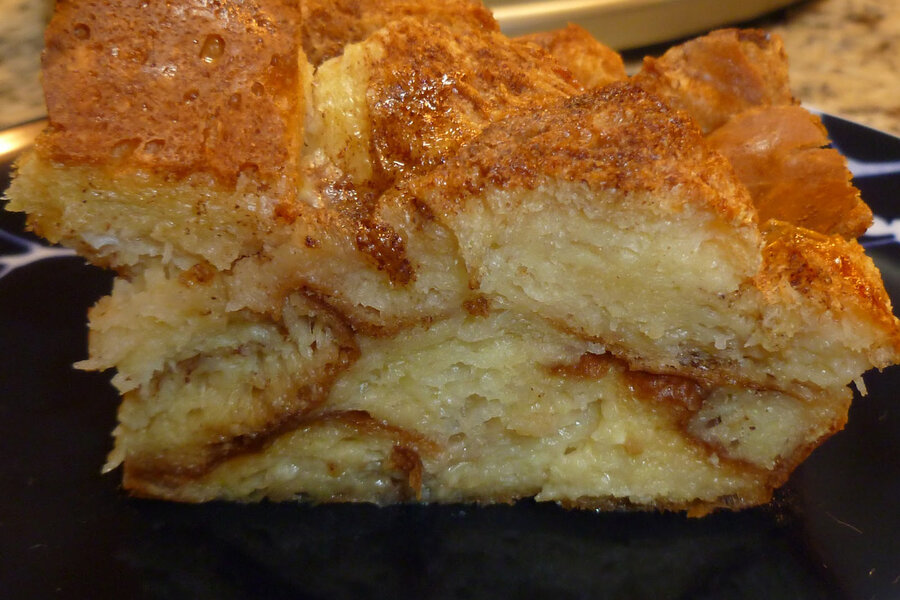By Carol Ramos, The Pastry Chef's Baking
From Cookin' Food
1 loaf day old Italian Bread or other hard white bread (I used challah)
1/4 cup chopped pecans, toasted (optional)
1/2 cup brown sugar
1 heaping teaspoon cinnamon
1/8 teaspoon freshly ground nutmeg
5 eggs
1-1/4 cups milk
1-1/2 teaspoons vanilla extract
1. Grease an 8-by-8 inch baking pan with nonstick cooking spray.
2. Slice the bread into 8 to 10, 1-inch wide slices. Cut each slice into approximately one inch cubes. Note: Using day old, drier bread is key here. It soaks up the wet ingredients more thoroughly than fresh bread does.
3. In a small bowl, combine nuts, brown sugar, cinnamon, and nutmeg. Mix well.
4. Place half of the bread cubes in a single layer in the baking pan. Sprinkle half the sugar mixture on top of bread. Place remaining bread cubes on first layer and sprinkle remaining sugar mixture on top.
5. In a large bowl, whisk together the eggs, milk and vanilla. Mix well.
6. Pour egg mixture evenly over the bread mixture in baking pan. With a spatula, lightly press down on the bread to evenly coat it with the egg combination.
7. Cover pan with foil and refrigerate overnight or for at least 5 hours. (That way the bread has time to suck up the custard mixture.)
8. Preheat oven to 350 degrees F. Bake pan for 20 minutes, covered. Remove foil and continue baking uncovered for 30-40 minutes longer or until top looks browned and breakfast bake looks slightly puffed.
9. Allow to cool for 5-10 minutes in pan. Serve warm with maple syrup.






